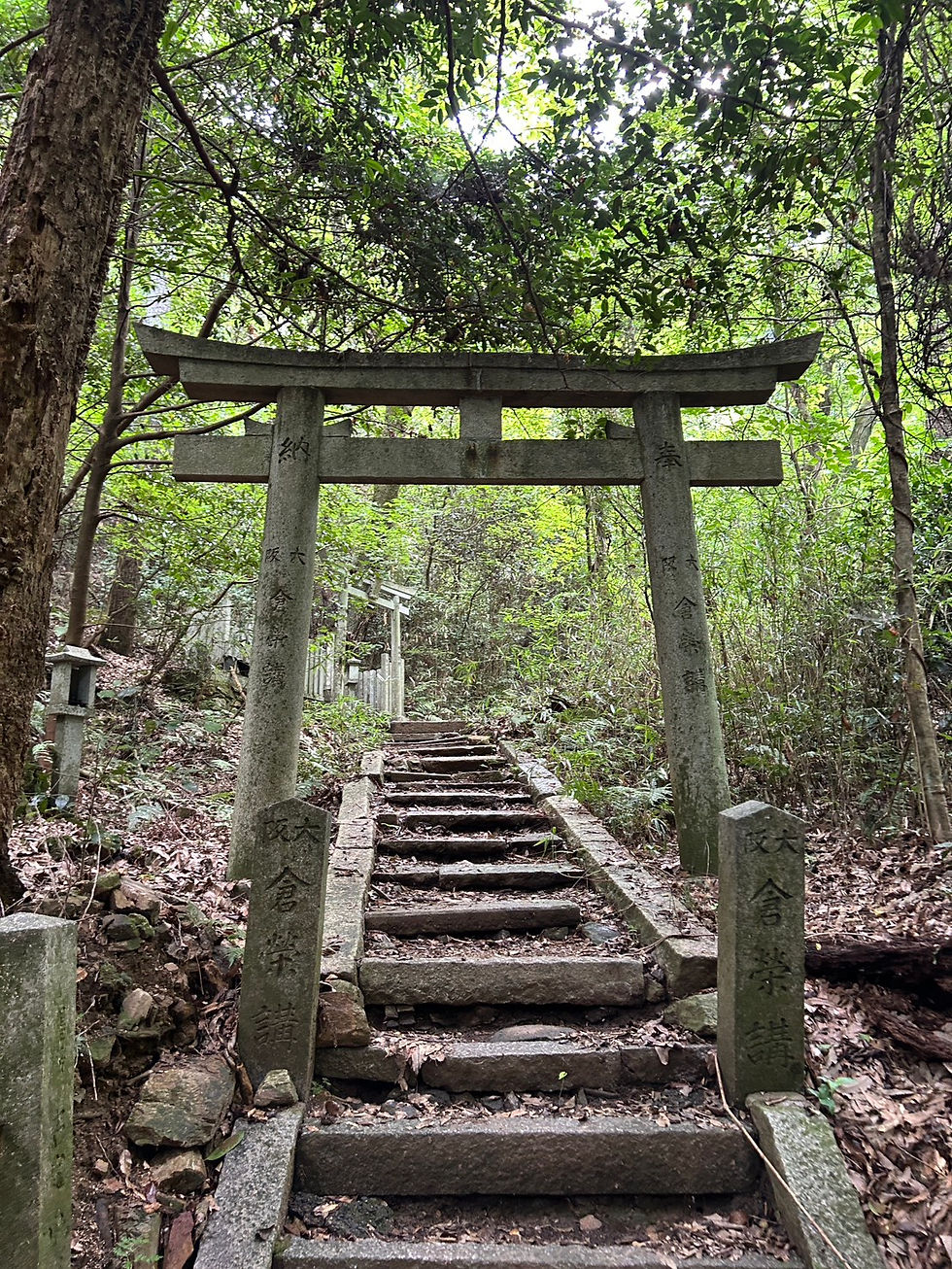A Hidden Cemetery on The Mount and Spectral Figures!
- Phillip Jackson

- May 3
- 4 min read
As I began to climb the stone steps, I couldn't help but feel a little anxious. I was aware of the numerous stories connected to this location and surrounding area. A ghostly figure at the railway crossing, the shadowy form of a woman in the abandoned old house, and rumours of a hanging in the bamboo forest.

Fallen leaves covered the steps, and as it had been raining, the way forward was precarious to say the least. I did not know how far it was to the hilltop cemetery, but I continued on.
Between Iwashimizu Hachimangu and Hashimoto stations is an abandoned house at the base of the hill. The house is said to have once been a guesthouse, which urban explorers have confirmed by the layout of the kitchen and bathrooms in the building. When it was last used for this purpose though is many years ago. There are signs in the house that it was a private residence or lived in up until about 15 years ago. Now, it is a dangerous site to step into and HIDDEN PATHS advises against anyone entering the building due to potential injury. We will return to stories of a paranormal nature at the house later in this blog post. For now we continue our ascent towards the cemetery.

The walk up to the cemetery wasn't long, but it was very slippery and I had to be careful of my footing as I made my way up, especially as it was a straight drop down to a ravine-like feature at the side of the steps.

Once at the cemetery the atmosphere changed. Compared to the sense of anxiety during the ascent there was now a feeling of calm, it was quite peaceful. But for some reason I found myself needing to say out loud "I come here respectfully, thank you for allowing me to visit". I felt that I was not alone, but there was no sense of fear. it was quite an unexpected experience and not one that I've encountered before. For a few minutes I walked around, being careful where I stepped. Most of the gravestone were old, but surprisingly a few looked to be quite new. There were also fresh flowers on some of the graves and the place was well tended. It was actually quite tranquil, and when I left I again found myself speaking aloud and saying "Thank you".



As soon as I left cemetery area and made may way back towards the abandoned house, that uncomfortable feeling of anxiety returned.

At the bottom of the steps, I looked towards the house, it was obviously dark inside and I returned to the path that would lead towards the train station, Iwashimizu Hachimangu just a few minutes away. As to the tales of a ghostly nature, people have reported seeing the dark shadowy figure of a woman in or near the house. There was in the past a rumour that a family living there had committed suicide but it would seem from sources that that is not true and more of an urban legend. There is also a report of a hanging in the bamboo forest some years back behind the house. Little more information on the details of this tragedy is difficult to find.
Close to the house and the entrance to the steps up to the cemetery is a railway crossing and it is said that the ghost of a woman has also been seen there. The area south of Hashimoto station was once a Yukaku, a red light district, and it has been said that the railway crossing apparition is one of the woman that worked in one of the brothels of Hashimoto (*a note on the Yukaku areas and Hashimoto can be found below). Some of the old brothel house still stand, mostly in disrepair, but there are also some that have been refurbished (one in fact has been turned into a guesthouse).

'From the 16th century on, red-light districts — yukaku in Japanese — began to be created in various places across the country, including Kyoto, Osaka and Edo, now Tokyo. During the Tokugawa period, yukaku paid large sums of money to the shogunate. In 1872, the central government banned forced prostitution and human trafficking, but to no avail because it did not present any aid to the women who would otherwise have lost their livelihood.
That was why yukaku continued to exist in Japan until 1956, when the anti-prostitution law was enacted to punish prostitution agencies and protect women. Half a century after this law went into force, townscapes with brothels continue to disappear.

Hashimoto Yukaku in Yawata, Kyoto Prefecture, had 86 brothels in 1937, according to a historic document. It is said about 680 people were working to entertain customers from Osaka and other areas and that the money paid by the yukaku accounted for one-third of Yawata’s local tax revenues.' - From a Japan News (Yomiyuri Shimbun article , April 2023)







Comments